The Congo River is a lifeline for the people of Africa. Its streams provide a navigable waterway essential for transportation, food, trade, and hydroelectric power. But this isn’t an ordinary river. Its vastness is reminiscent of an ocean; you may forget it’s a river.
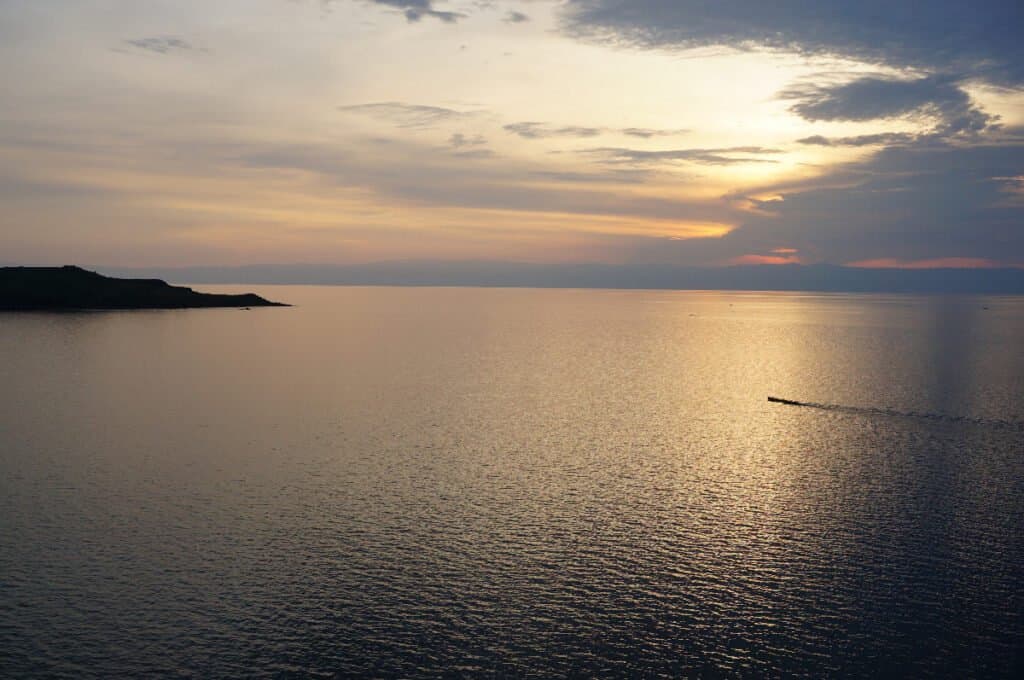
The headwaters of the Congo are between Lake Tanganyika and Lake Nyasa
©Naoki Kakuta/Shutterstock.com
What lives at the bottom of the Congo River, and what makes it unique? Its depths are unknown, and mysterious stories of a giant reptilian creature plague its shores. Plus, discover something fascinating that could help scientists in their exploration of evolution.
Where is the Congo River on a Map?
The Congo River flows through West-Central Africa, starting in the highlands of Northeast Zambia, between Lakes Tanganyika and Nyasa. It ends in the Atlantic Ocean in the Democratic Republic of the Congo.
History and Geography of the Congo River
The Congo River is the deepest river in the world and the second-longest river in Africa. Its depths reach 720 feet, it’s the second-largest in the world for discharge volume, and its length is 2,920 miles, the 9th longest in the world. It is the only major river to cross the equator twice, and its basin accounts for 13% of the entire African landmass (an area larger than India). In other words, it’s massive.
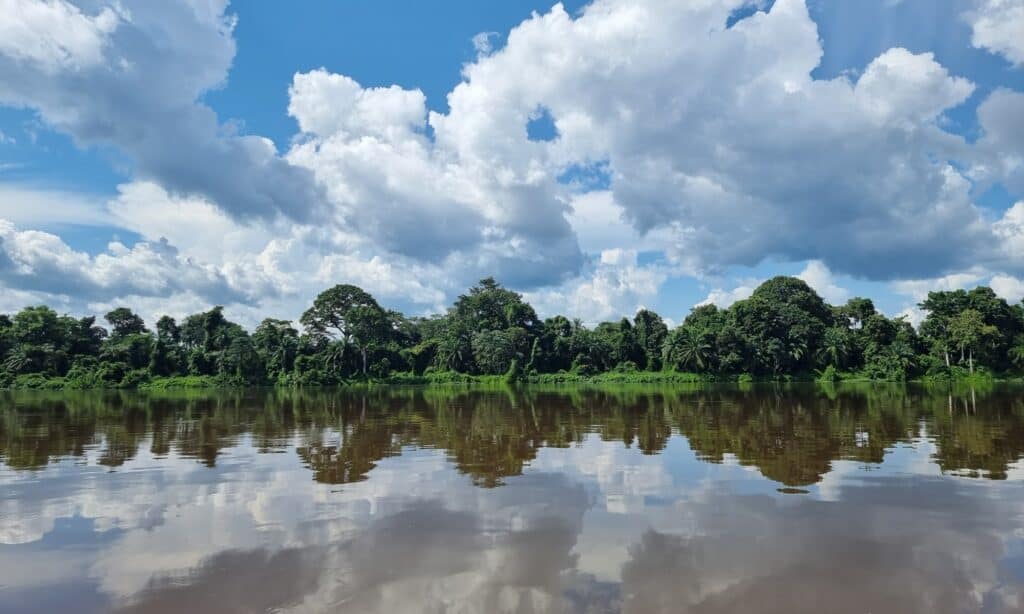
The Congo River is the deepest river in the world and is around 2 million years old.
©iStock.com/Fanny Salmon
The river and its tributaries flow through the Congo rainforest, and its sources come from the East African Rift System mountains. The main channel and its branches are divided into lower, middle, and upper sections. While many people travel this ancient river, it can be hazardous. Even the most experienced rafters would have difficulty navigating through canyons, falls, and rapids. Some areas, including a 75-mile canyon with extreme rapids called “The Gates of Hell,” are impossible to pass.
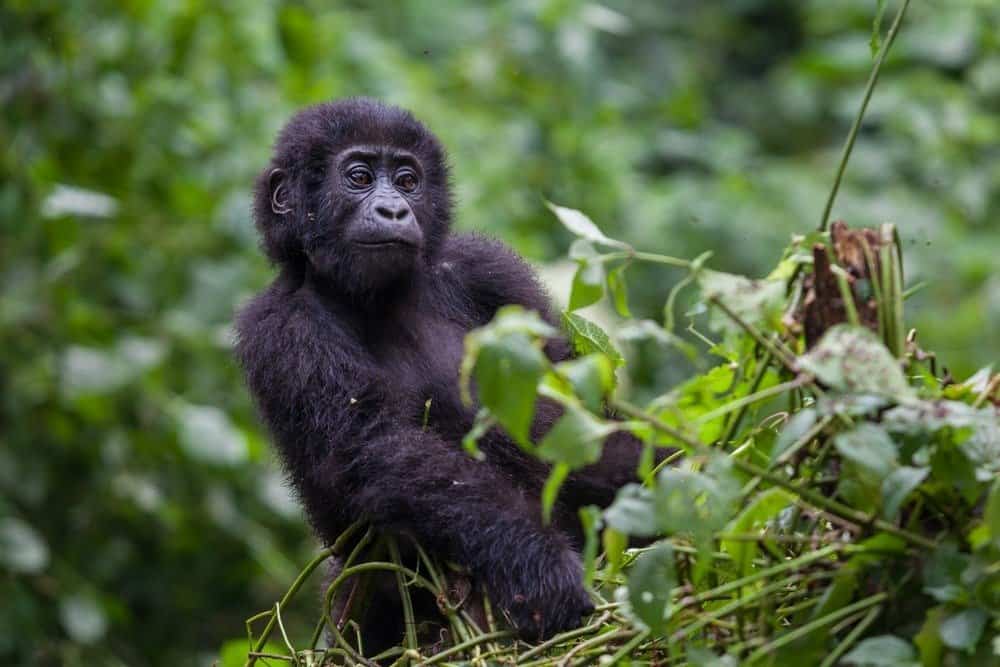
Baby Eastern gorilla in Congo rainforest
©Katja Tsvetkova/Shutterstock.com
Scientists estimate the Congo River to be around 1.5 to 2 million years old. It formed during the Pleistocene period, and its formation led to the speciation of bonobo apes and chimpanzees. Exploration of the river didn’t begin until the late 1400s, and much of the discovery was interrupted due to dangerous conditions. In 1877, it took 999 days for a European crew to travel through the middle and lower Congo. The river has a long and frightening history of cannibal tribes, the slave trade, and massacres. Even today, mysticism and folklore surrounding the Congo River keep people away from certain parts.
What is Different About the Lower Congo?
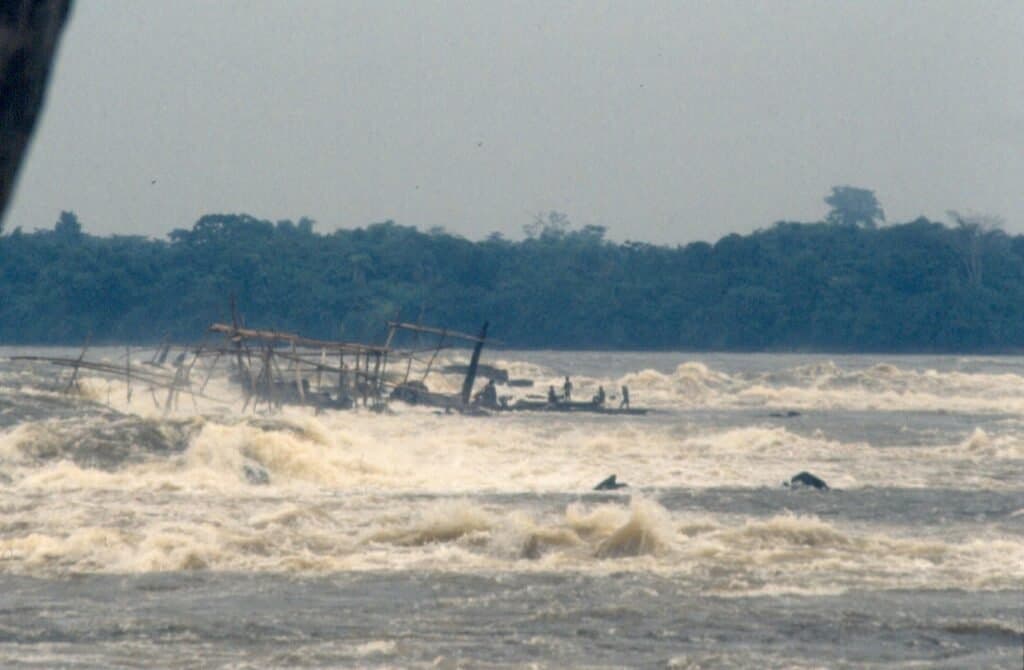
The Lower Congo is a narrow channel with extreme rapids that propels millions of cubic feet of water into the ocean every second.
The Congo River is deceptive. It is a slow-moving, meandering flow for much of the journey until it unexpectedly plunges over deep canyons and picks up remarkable speed. This point in the river is the Lower Congo, which is exceptionally dangerous. Most rivers empty into the ocean by way of a river delta, but the Congo turns into a 200-mile narrow channel that jets out to the Atlantic Ocean.
1.25 million cubic feet of water spews out every second. The river must move very fast to discharge that amount of water. With depths of over 700 feet combined with hostile currents, the Lower Congo contains 30 percent of the river’s fish diversity and is home to a natural laboratory for scientists.
Congo Canyon
One of the largest submarine canyons is at the end of the Congo River. A submarine canyon is a steep-sided valley cut into the sea floor with heights of over 16,000 feet. The canyon begins inland on the continent, cuts across the continental shelf for 52 miles, slopes down, and ends 173 miles from where it started.
The walls of the V-shaped canyon are over half a mile long, and its underwater current is the strongest in the world. The canyon serves as a channel for millions of tons of organic matter to be transferred from the river’s watershed to the ocean floor.
What Lives at the Bottom of the Congo River?
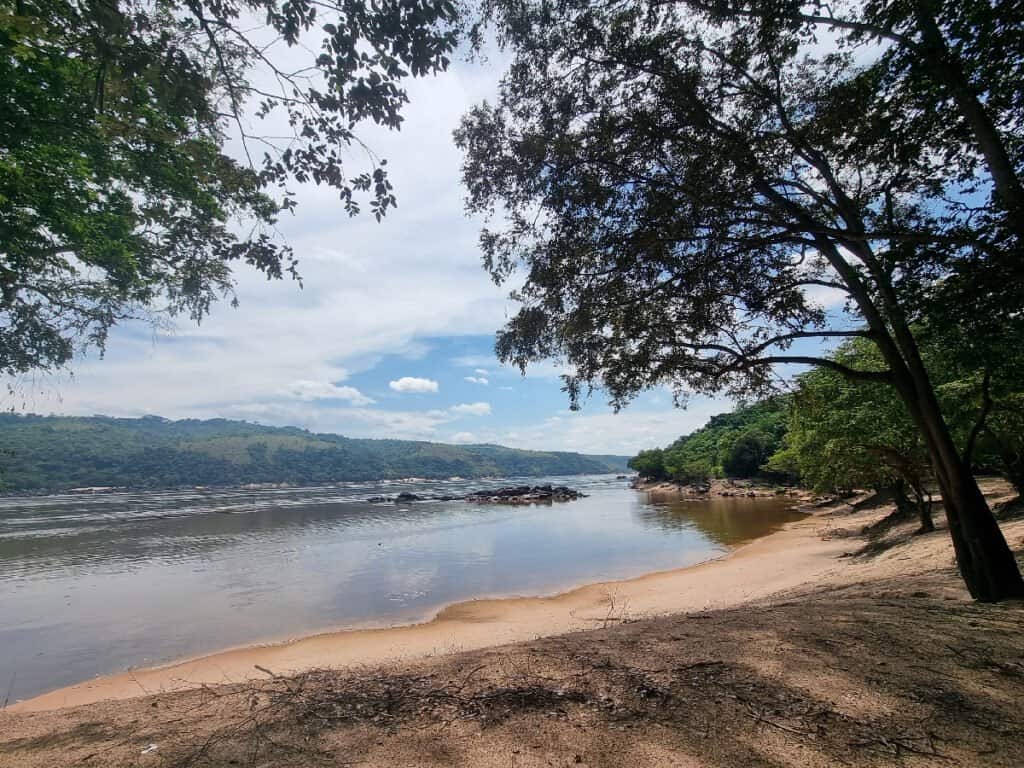
Over 300 fish species, including new, mutated species, live at the bottom of the Congo River.
©iStock.com/Fanny Salmon
Over 300 species of fish, including a new, evolving species, live at the bottom of the Congo River. Most of the fish in the Congo, like catfish and eel, live in the shallower areas. However, there is a new, remarkable species called Mondeli Bureau, or “white man in the office,” which live in the deepest parts of the river. This species is one of six recently discovered.
At a depth of 720 feet, the bottom of the river is comparable to the ocean’s twilight zone. These newly discovered river fish thrive in deep currents due to genetic adaptions. They developed elongated forms, lost their pigment, and shrank their eyes. Scientists believe that these mutations are from a mixture of living in extreme depths and strong currents in the Lower Congo.

The goliath tigerfish is one of the many fish found in the Congo River Basin and Lake Tanganyika.
©Danny Ye/Shutterstock.com
It is believed that because the deep waters lack nutrients, the mondeli bureau has lost the appetite suppression gene and, as a result, binge when they can. The current separate fish from their species and forces them to evolve. This area of the Congo is heavily studied while researchers look for answers about the convergent evolution.
While most creatures don’t dwell in the extreme depths of the river, the shallow areas, including the basin, teem with life. Snakes, turtles, and crocodiles swim through the water, while elephants, chimpanzees, bonobos, and gorillas make the surrounding rainforest their homes. The deadliest creatures around the Congo River are crocodiles and poisonous snakes like puff adders, green mambas, and cobras.
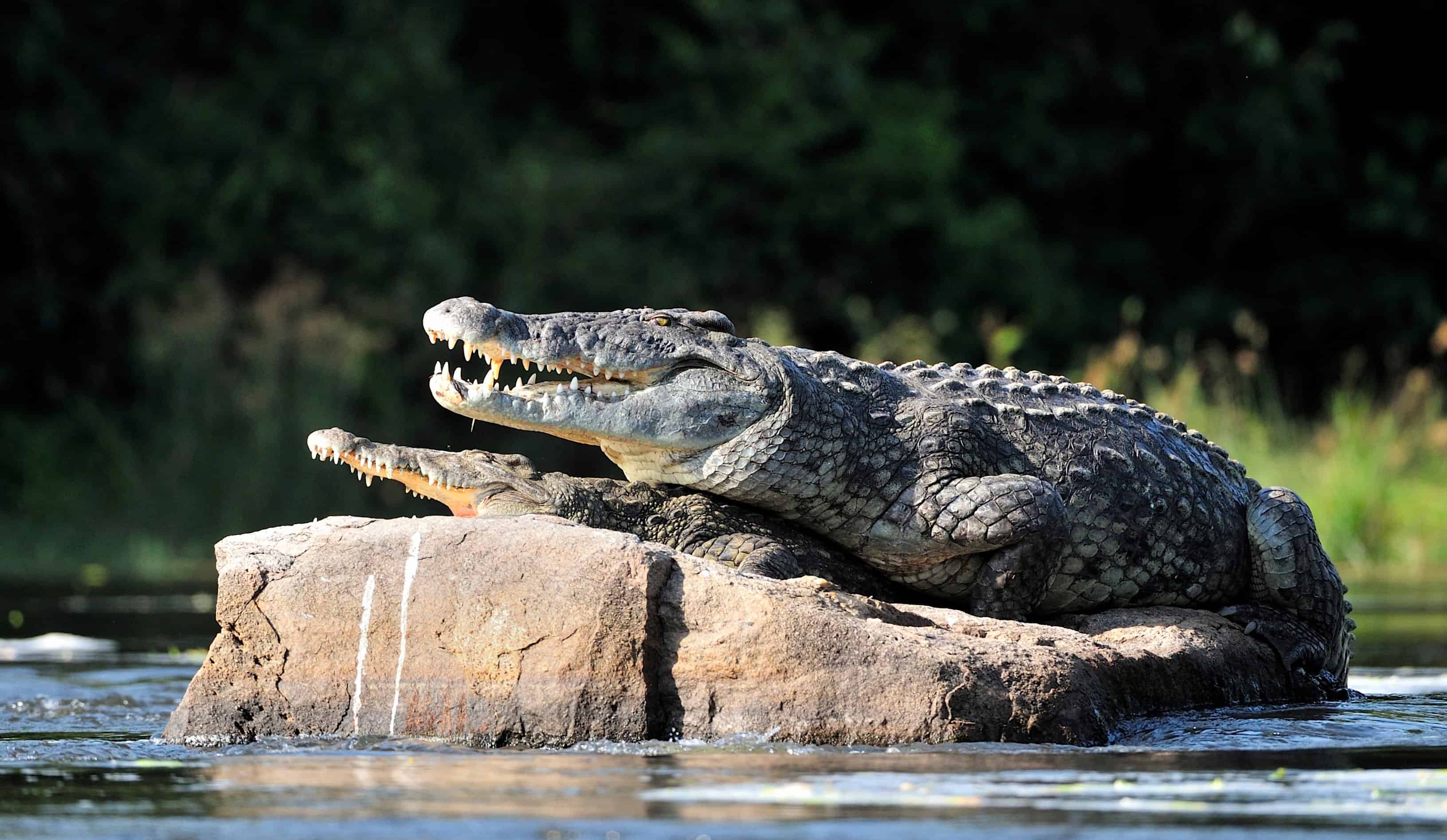
There are many strange legends involving the Congo River. Some include giant, long-necked dinosaurs hiding in the jungle, while others refer to a creepy reptilian monster that chases people. Is there any truth to these sightings, or are they just fictional tales?
What is Mokele-Mbembe?
Mokele-mbembe, “One who stops the flow of rivers,” is a creature believed to inhabit the Congo River basin. The beast is dinosaur-like with a long neck, a long tail, and a horn on top of its head. Locals believe it may be a herbivore and lives in a cave near the river.
The first reported sighting was in 1776, when a French missionary came across giant footprints. In 1909, an explorer referred to this creature as well and was the first person to describe it as a dinosaur. Propelled by eyewitness testimony, footprints, and fuzzy photographs, more than 50 expeditions have searched for this mysterious creature over the years (even today). Due to the lack of evidence, scientists believe it is no more than a local story. Some still think they will eventually catch it.
The photo featured at the top of this post is © iStock.com/Fanny Salmon
Thank you for reading! Have some feedback for us? Contact the AZ Animals editorial team.







